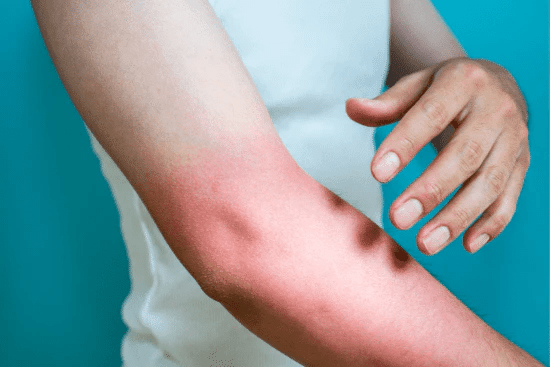
Sun allergy, also known as photosensitivity, is a condition characterized by an immune system response to sunlight. When exposed to the sun, the immune system perceives the altered skin as foreign and initiates reactions, which can manifest as a rash, blisters, or hives. Individuals who are sensitive to sunlight may experience these symptoms, and in some cases, the reaction can occur shortly after sun exposure.
There are two main types of sun allergy: hereditary and acquired. In the hereditary form, individuals inherit a predisposition to develop a sun allergy. On the other hand, acquired sun allergies occur when external factors, such as exposure to certain plants or medications, trigger the symptoms in individuals who are otherwise not naturally sensitive to the sun.
Homeopathy is considered a safe treatment option for sun allergy, as well as various other types of allergies and their associated reactions. Homeopathic remedies are derived from natural substances, ensuring they are safe and free from side effects. These remedies are prescribed based on individual symptoms, tailoring the treatment to each person's specific needs.
Sun allergies, also known as photosensitivity reactions, can manifest in different forms. Here are some common types of sun allergies:
Sun allergy, also known as photodermatitis or sun sensitivity, is a condition in which the skin reacts abnormally to sunlight or exposure to ultraviolet (UV) radiation. The symptoms of sun allergy can vary from person to person, but some common signs and symptoms include:
Sun allergy, also known as photosensitivity or photodermatitis, occurs when the skin reacts abnormally to sunlight or other sources of ultraviolet (UV) radiation. The exact causes of sun allergy can vary from person to person, but here are some common factors that contribute to its development:
Up to 20% of the global population may be susceptible to sun allergies.
Sun allergic reactions can manifest as various skin conditions, including rashes, blisters, or hives. When exposed to sunlight, certain individuals may experience an abnormal immune response that leads to these skin abnormalities. The specific type of reaction can vary from person to person, and it's important to recognize and understand these symptoms to take appropriate measures for prevention and treatment.
The sun rash typically takes about 7 to 10 days to resolve on its own.
Yes, sun allergy is rare
Polymorphic light eruption (PMLE) is a skin condition that is more prevalent in women compared to men.